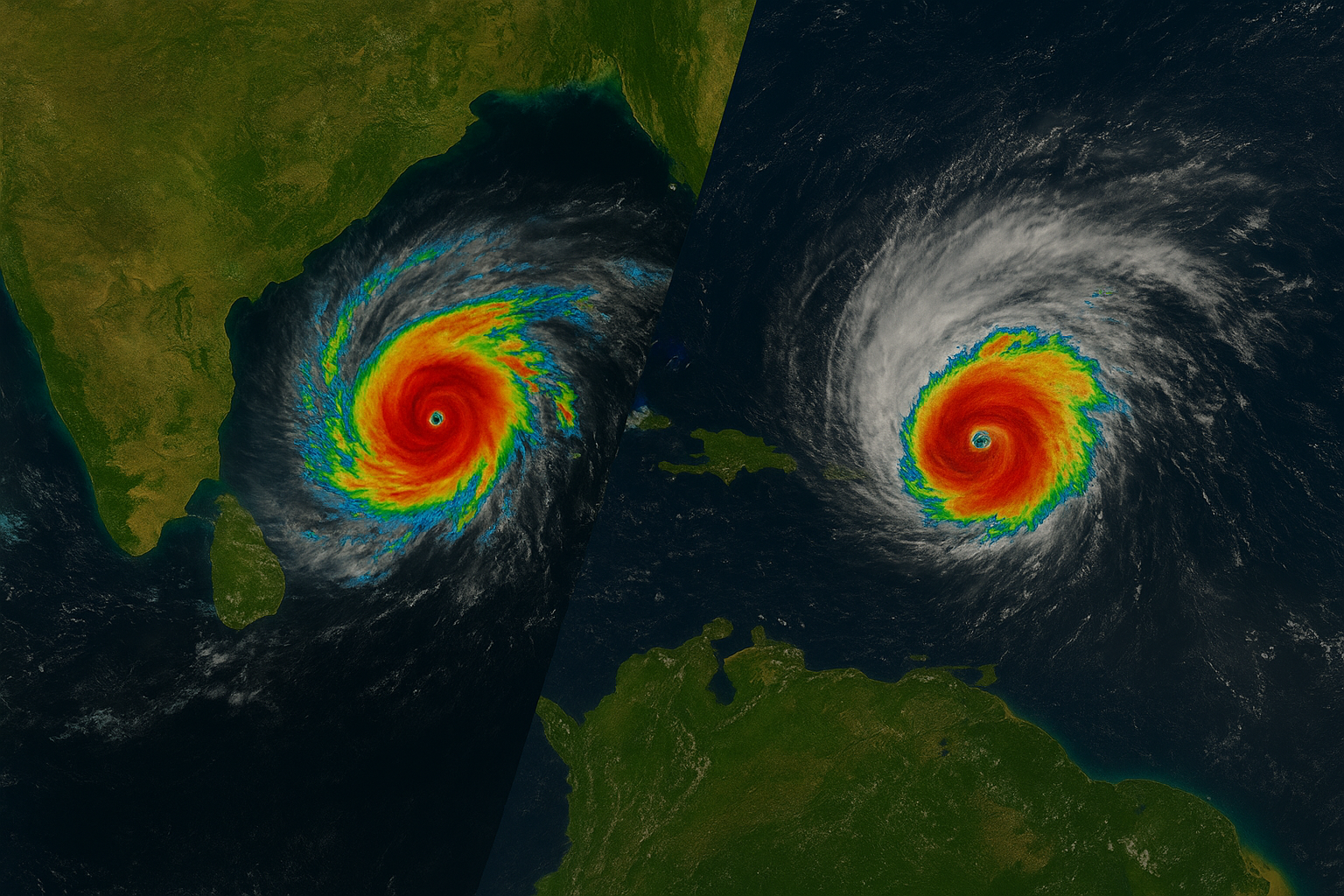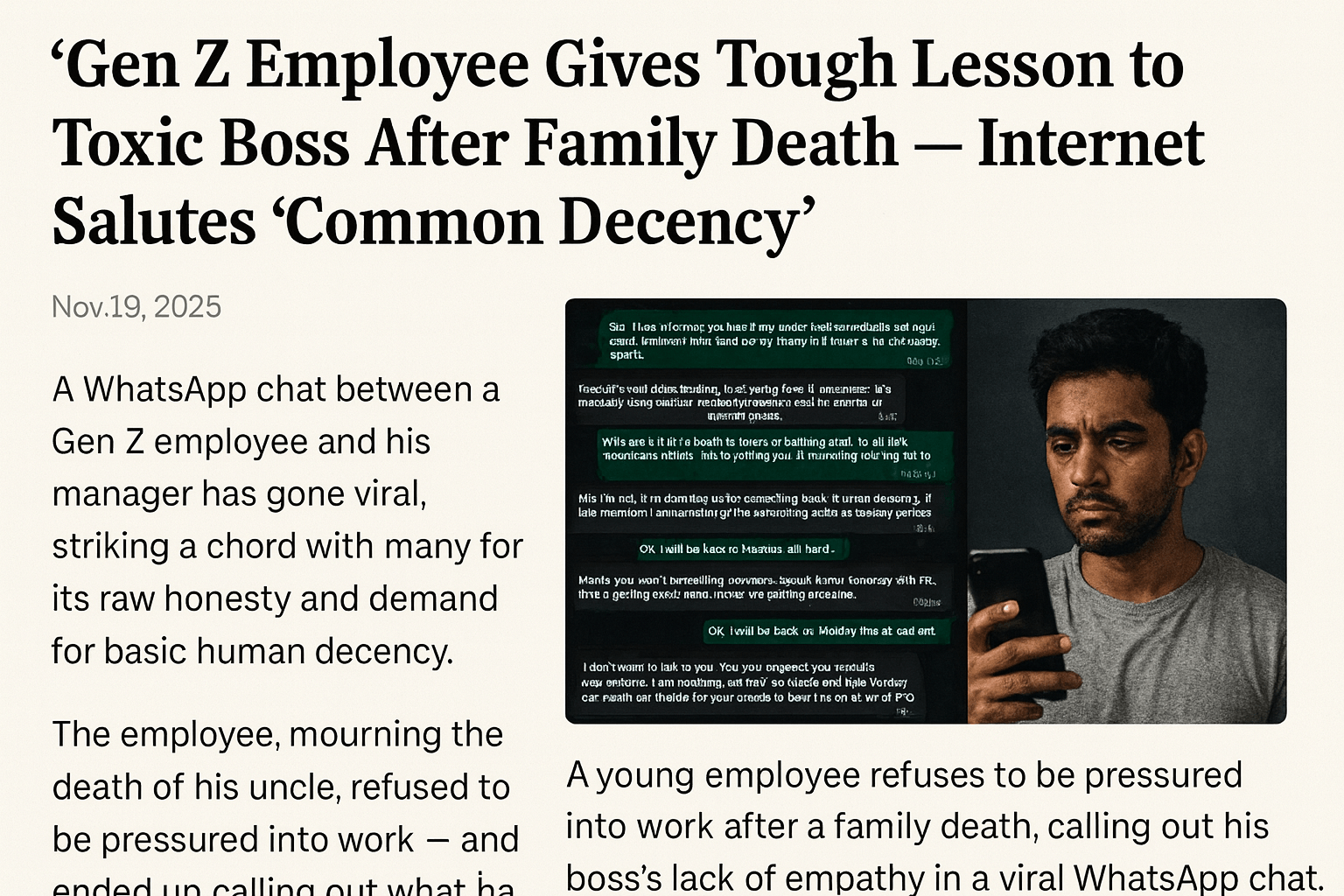
Cyclone Montha and Hurricane Melissa
Tropical storms often make news in places all over the world. It happens for good reason. The way these storms get their names, where they form, how strong they are, and the words we use for them can confuse many people. Right now, Cyclone Montha in the North Indian Ocean and Hurricane Melissa in the Atlantic are two storms you might hear about. Knowing the difference between these storms helps show how weather works in different parts of the world. It also shows why these storms can be so different from each other.
What Are These Storms?
- Cyclone Montha: This is a weather system in the Bay of Bengal or near the North Indian Ocean. Meteorological agencies, including the India Meteorological Department (IMD), have given warnings for Montha. It is likely to come near Andhra Pradesh with a lot of rain and strong winds.
- Hurricane Melissa: This is a very strong Category 5 storm in the Atlantic that is going toward Jamaica and eastern Cuba. Its wind speeds have reached some of the highest levels. Experts say it will bring very bad effects.
Both are tropical cyclones, but they happen in different parts of the ocean. They have their own naming methods. They also get classed in different ways. The risks they bring are not the same, and people need to get ready for them in different ways.
Key Differences Between the Two
Here are some of the main things that make Cyclone Montha different from Hurricane Melissa:
1. Basin and Regional Naming
- Cyclone Montha starts in the North Indian Ocean area, which includes the Bay of Bengal and the Arabian Sea. People in this area call these storms “cyclones” or “cyclonic storm”.
- Hurricane Melissa starts in the Atlantic Ocean basin. Storms over there get the name hurricanes.
2. Classification / Intensity Scales
- In the Indian sub-continent, the IMD gives names like cyclonic storm, severe cyclonic storm, and very severe cyclonic storm based on how strong the wind is. For example, Montha is likely to reach the level of a severe cyclonic storm.
- In the Atlantic, storms are checked by the Saffir-Simpson Hurricane Wind Scale (Category 1–5). Hurricane Melissa is now in Category 5, which is the highest one.
3. Typical Wind Speeds & Structure
- Montha is expected to get stronger. The wind may reach close to 90-100 km/h, and even go higher when it gets close to land (for its basin).
- Melissa’s winds are now between 160-280 km/h (100-175 mph). This puts it as one of the strongest storms in the Atlantic this year.
4. Areas Affected & Landfall Patterns
- Montha is set to reach land on India’s east coast, in the Andhra Pradesh or Odisha area. The risk is heavy rain, flooding by the coast, and rough seas.
- Melissa is impacting islands in the Caribbean, like Jamaica. It is moving toward Cuba and the Bahamas. The risk is strong winds, rain, and storm surge.
5. Impact & Preparedness Differences
- In India, Montha starts storm alerts by the IMD. There are orders to evacuate people in areas close to the coast. Trains are being cancelled, and people who fish have been told to stay off the water.
- In the Caribbean, Melissa has led to many people having to leave their homes. Teams are getting ready to help from other countries. There are warnings that things could be very bad.
Why Understanding These Differences Matters
- Terminology for Readers: When you read “cyclone” or “hurricane”, it helps the people who read your text to know that they both talk about the same type of storm, but in different places.
- Risk Awareness: It is good for people to understand what “Category 5 hurricane” means compared to “severe cyclonic storm”. This helps us read and get warnings, and know what is happening in their city or area.
- Preparedness & Infrastructure: Every area is different in how it works, in its roads, its buildings, and in how it responds to emergencies. A system in one part of the the world may not work well in another part.
- Global Context: Storms are getting stronger in most sea areas now, because the ocean is warmer. A good example is Melissa’s quick build-up—it was pushed by rising sea temperatures.
What Can We Learn From Montha and Melissa?
- Growing Fast: Melissa shows how a tropical storm can quickly turn into a big hurricane, reaching Category 5 because the water is warm and the weather helps.
- Regional Naming & Listing Systems: Montha shows how countries in the Indian Ocean region work together to name and watch the storms. OdishaBytes+1
- Coastal Weakness: Both storms show how open and weak the shores are in places like India or the Caribbean.
- Early Warnings Matter: Early alerts, people leaving at the right time, and sharing good information help people and cut down on the losses in both areas.
Final Thoughts
Cyclone Montha and Hurricane Melissa are both strong storms. But they are not the same. They are different in where they happen, how big they are, what they are called, and what they do. In India, it is important to know what people mean when they say “cyclone.” This is not the same as an “Atlantic hurricane.” If you know the difference, you can understand the news, any alerts, and what you should do to be ready.
The next time you see “Cyclone Montha is expected to make landfall” or “Hurricane Melissa heads toward Jamaica,” you will get what they mean. These words used in news are for storms in different places and show the power of nature. They remind people to keep up with the news and know what is going on.






